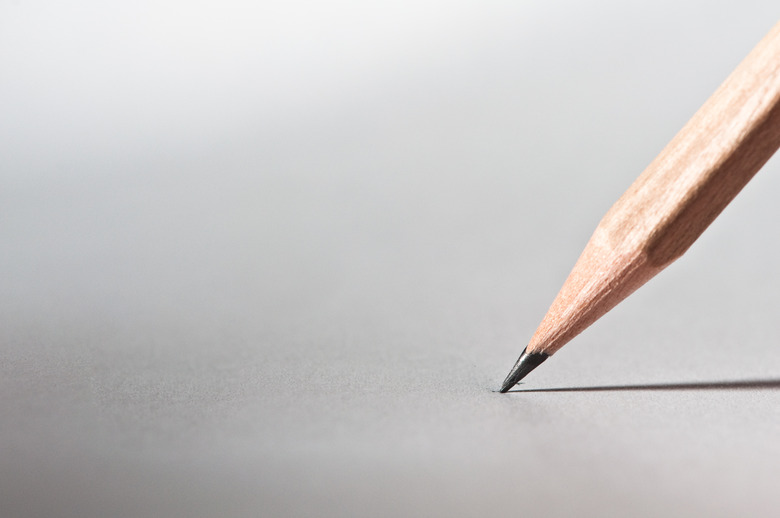What Are The Uses Of Graphite?
Graphite has a wide variety of almost contradictory uses. An allotrope of carbon and one of the world's softest minerals, its uses range from writing implements to lubricants. It can be made into a one-atom-thick cylinder of graphene that is a super-strength material used in sports equipment. Graphite can behave like a metal and conduct electricity but also as a nonmetal that resists high temperatures.
Crystalline Structure
Crystalline Structure
Graphite occurs naturally as flakes and veins within rock fractures or as amorphous lumps. The basic crystalline structure of graphite is a flat sheet of strongly bonded carbon atoms in hexagonal cells. Called graphenes, these sheets stack above each other to create volume, but the vertical bonds between the sheets are very weak. The weakness of these vertical bonds enables the sheets to cleave and slide over one another. However, if a graphene sheet is aligned and rolled horizontally, the resultant material is 100 times stronger than steel.
Writing and Artists' Materials
Writing and Artists' Materials
"Lead" pencil cores are made of a mixture of clay and graphite. Loosely cleaved graphite flakes mark the paper, and the clay acts as a binding material. The higher the graphite content of the core, the softer the pencil and the darker its trace. There is no lead in what are known as lead pencils. The name originated in Europe when graphite was called "plumbago" or "black lead" because of its metallic appearance. Graphite's use as a marker dates from the 16th century in northern England, where local legend states that shepherds used a newly discovered graphite deposit to mark sheep.
Lubricants and Refractories
Lubricants and Refractories
Graphite reacts with atmospheric water vapor to deposit a thin film over any adjacent surfaces and reduces the friction between them. It forms a suspension in oil and lowers friction between two moving parts. Graphite works in this way as a lubricant up to a temperature of 787 degrees Celsius (1,450 degrees Fahrenheit) and as an anti-seize material at up to 1,315 degrees Celsius (2,399 degrees Fahrenheit). Graphite is a common refractory material because it withstands high temperatures without changing chemically. It is used in manufacturing processes ranging from steel and glass making to iron processing. It is also an asbestos substitute in automobile brake linings.
Lithium-Ion Batteries
Lithium-Ion Batteries
Lithium-ion batteries have a lithium cathode and a graphite anode. As the battery charges, positively charged lithium ions in the electrolyte – a lithium salt solution – accumulate around the graphite anode. A lithium anode would make a more powerful battery, but lithium expands considerably when charged. Over time, the lithium cathode's surface becomes cracked, causing lithium ions to escape. These in turn form growths called dendrites in a process that can short circuit the battery.
Graphene Technology
Graphene Technology
Rolled single graphene sheets are 10 times lighter, as well as 100 times stronger, than steel. Such a rolled sheet is also referred to as graphene, and this derivative of graphite is the world's strongest identified material and has been used to make super-strength, lightweight sports equipment. Its high electrical conductivity, low light absorbance and chemical resistance make it an ideal material for future applications, including in medical implants such as artificial hearts, flexible electronic devices and aircraft parts.
Cite This Article
MLA
Kielmas, Maria. "What Are The Uses Of Graphite?" sciencing.com, https://www.sciencing.com/uses-graphite-5670130/. 5 April 2018.
APA
Kielmas, Maria. (2018, April 5). What Are The Uses Of Graphite?. sciencing.com. Retrieved from https://www.sciencing.com/uses-graphite-5670130/
Chicago
Kielmas, Maria. What Are The Uses Of Graphite? last modified March 24, 2022. https://www.sciencing.com/uses-graphite-5670130/
